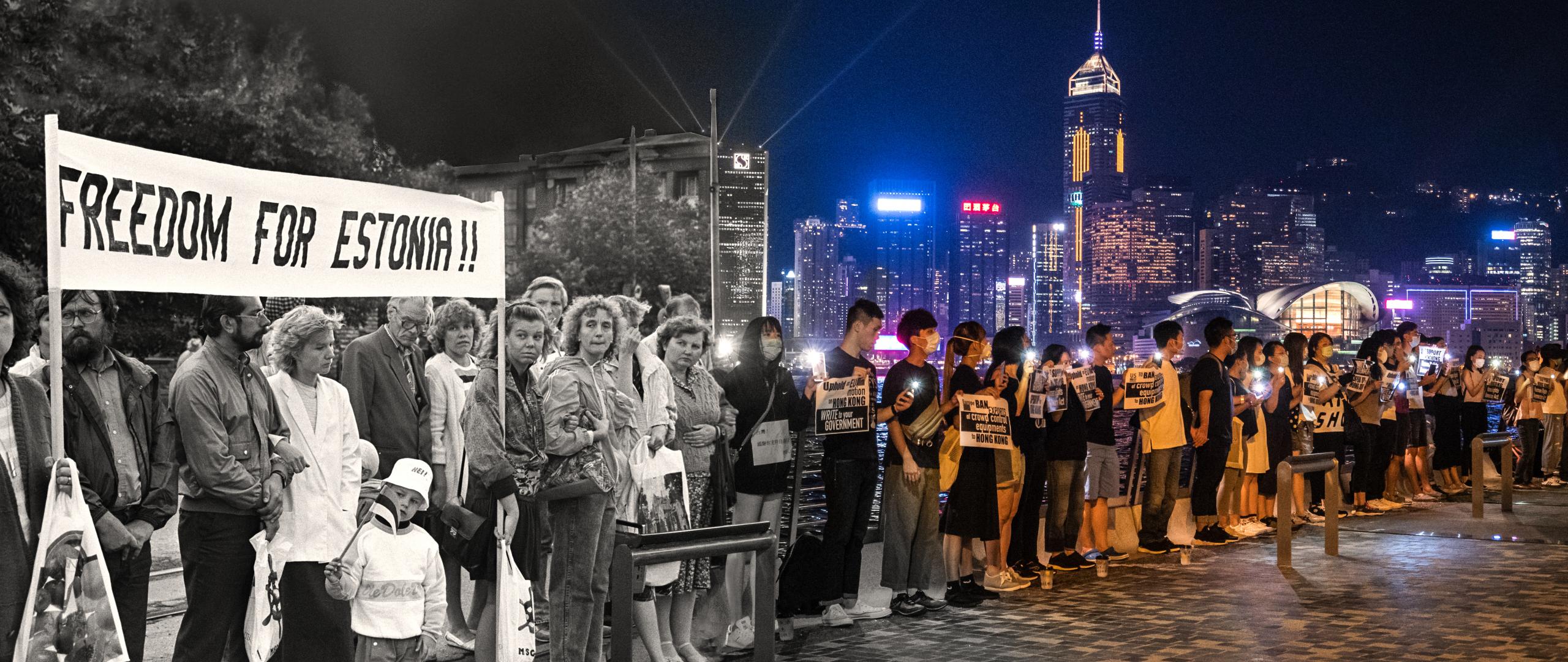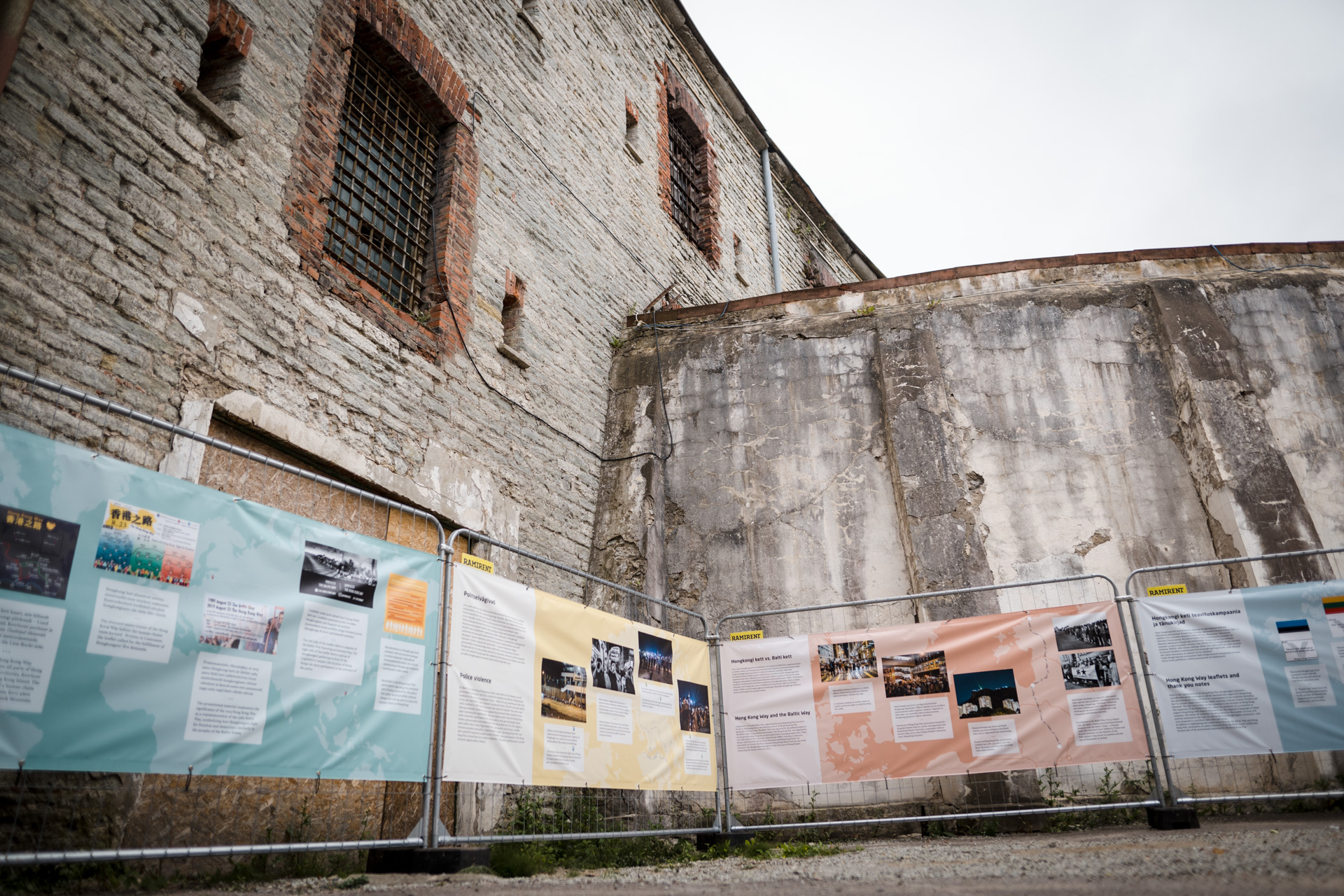Chains of Freedom: the Legacy of the Baltic Way in Hong Kong

The aim of Chains of Freedom: the Legacy of the Baltic Way in Hong Kong, created in cooperation of the Estonian Institute of Historical Memory and human rights activists of Hong Kong, is to demonstrate solidarity with the Hongkongese people in their anti-communist aspirations for liberty. The exhibition is open from 23 August at the gate of Patarei Prison exhibition area Communism is Prison, and will remain open until 26 September 2021, when Patarei Prison’s exhibition season is due to end.
The exhibition is also available in English online at www.communistcrimes.org/en, with the aim of spreading Hong Kong’s idea of liberty globally.
Iverson NG, a Hongkongese human rights activist residing in Tallinn, approached the Estonian Institute of Historical Memory with the exhibition idea. With the help of a team of volunteers, he compiled an exhibition that gives a short overview of the situation in Hong Kong as well as the demands of the Hongkongese people in achieving respect for human rights and liberty. In 2019, these aspirations culminated as a mass demonstration in the form of human chain, reminiscent of the Baltic Way.
It is notable that due to understandable reasons, his team members do not wish to be represented at the Hong Kong exhibition under their own name.

The attention that the Baltic Way gained among the international community has not faded. The legacy of this peaceful demonstration is greater than we ourselves perhaps imagine. In 2019, Hongkongers chose the Baltic Way as their role model during the protests against the negotiations held between United Kingdom and China in 1984. The two countries determined the future of Hong Kong without a single Hong Kong representative present. More than 200,000 people formed a 60 kilometre human chain, demanding respect for human rights, justice and liberty.
Unfortunately, such aspirations have not proved successful thus far. Ignoring the wishes of its residents, Hong Kong was handed over to the People’s Republic of China. Hong Kong has its autonomy, but the pressure of the communist regime continues to increase and the violations of human rights are becoming ever more serious.
The Baltic Way
Assigning the Baltic states to the Soviet sphere of influence was decided on 23 August 1939, when Germany and the USSR signed a non-aggression treaty, which contained a secret protocol on the division of spheres of influence in Eastern Europe.
50 years later, on 23 August 1989, the Baltic peoples stepped onto the international stage and gained attention for the Baltic Way – a human chain stretching from Tallinn to Vilnius, drawing attention to nearly half a century of unjust Soviet occupation and its hundreds of thousands of victims.
Two years later, Estonia restored its independence and reinstated the Republic of Estonia that had been created in 1918, but occupied and annexed in 1940, on the basis of legal continuity.